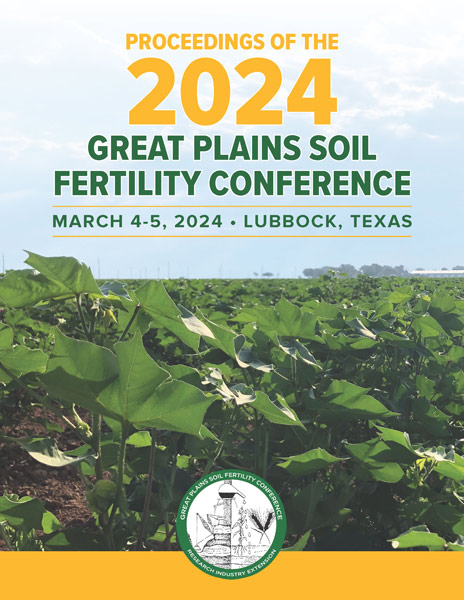Conference Proceedings Available!
Proceedings
Authors
| Filter results5 paper(s) found. |
|---|
1. Fall and Spring Soil Residual Nitrate-n As Affected by Irrigation and Nitrogen ManagementNitrogen credit from residual nitrate-N from soil samples collected in spring is widely considered and accounted for in managing N in crop production. That is important from both economic and environmental perspectives. However, there is no incentives for farmers to determine post-harvest soil residual nitrate-N in fall. It is important to note that any difference in fall and spring soil residual nitrate-N would suggest environmental N losses via denitrification or leaching in that fallow period.... B. Maharjan, X. Qiao |
2. Nitrogen Managememt in Dryland Winter Wheat to Improve Grain Yield and ProteinMaximizing the yield along with adequate protein content in winter wheat is an emerging challenge for dryland wheat producers. Proper nitrogen (N) management with optimization of fertilizer application rate and timing might be a potential strategy to improve grain yield and protein. The objective of the study was to evaluate the effects of different N rates and application timing on grain yield and protein content of hard red winter wheat in Nebraska. Field study was carried out at four locations... D. Ghimire, B. Maharjan |
3. Does Coal Char Reduce Ammonia Volatilization by Slowing Urea Hydrolysis in Soil?Ammonia volatilization due to urea hydrolysis begins immediately after N fertilizer applied in soil and continues up to two weeks. This process might adversely affect N availability in soil/ plant systems and reduce soil fertility and crop yields, as well as bring the negative impact in environment. Char, incomplete burning of coal combustion residue which contains up to 30% total C by weight, is hypothesized to reduce N losses from ammonia volatilization. A 21-day laboratory study was conducted... D. Panday, B. Maharjan |
4. Sugarbeet Yield Response and Nitrate Leaching As Influenced by Nitrogen Management in Semi-arid ClimateFertilizer nitrogen (N) in irrigated sugarbeet production needs to be optimized to simultaneously increase yield and reduce nitrate leaching. In addition to adjusting N rate and application timing, there are available fertilizer technologies such as controlled- or slow-release N which may be beneficial for beet yield and reducing potential nitrate leaching. However, there are limited studies assessing the effectiveness of such fertilizers for sugarbeet in a semi-arid climate. The two-year experiment... D. Ghimire, B. Maharjan |
5. Effects of Fertilizer Nitrogen Management on Biomass, Oil, and Nitrous Oxide Emissions in Peppermint in Nebraska PanhandlePeppermint (Mentha pipperita) is an aromatic perennial herb that contains aromatic oil, primarily menthol. Irrigated peppermint production requires large nitrogen (N) input, which is often higher than for irrigated corn. Therefore, if not managed properly, mint production has a high potential for N losses, including nitrous oxide (N2O) emissions. Nitrous oxide is a major greenhouse gas and the most important ozone-depleting emission. Increasing N2O emissions from... B. Maharjan, S. Desilva |
